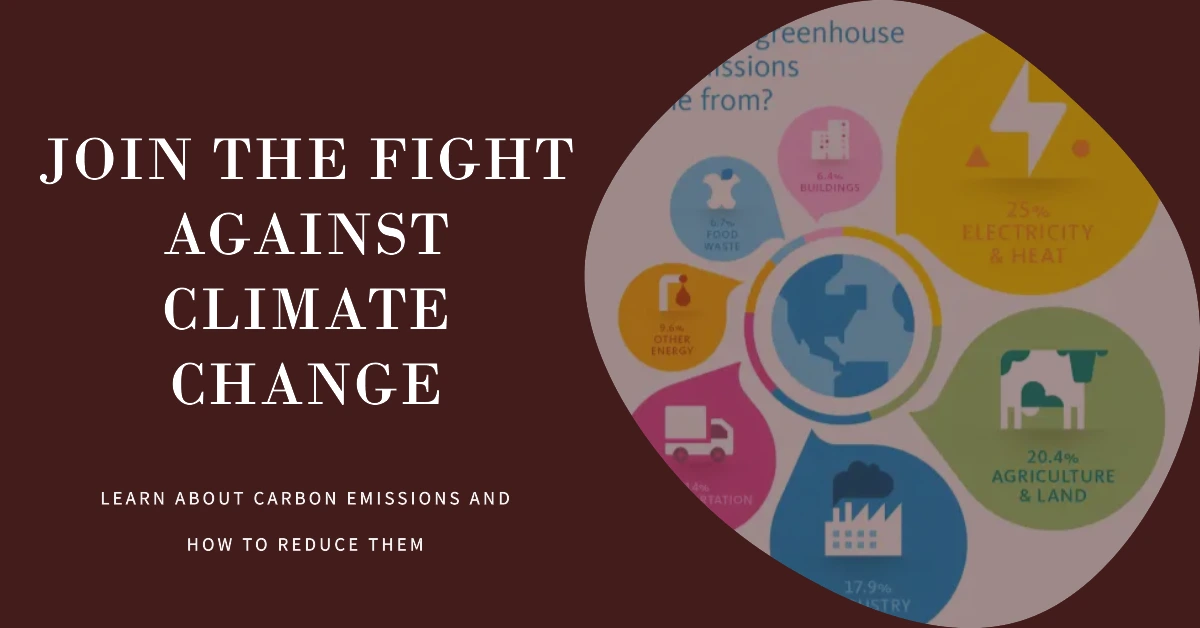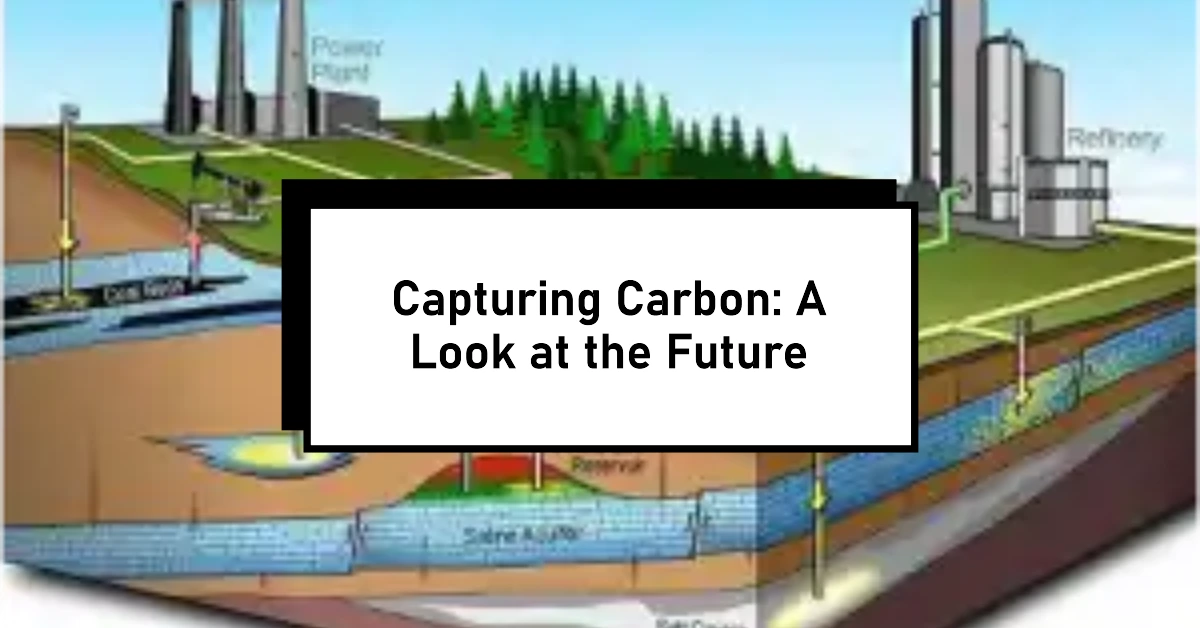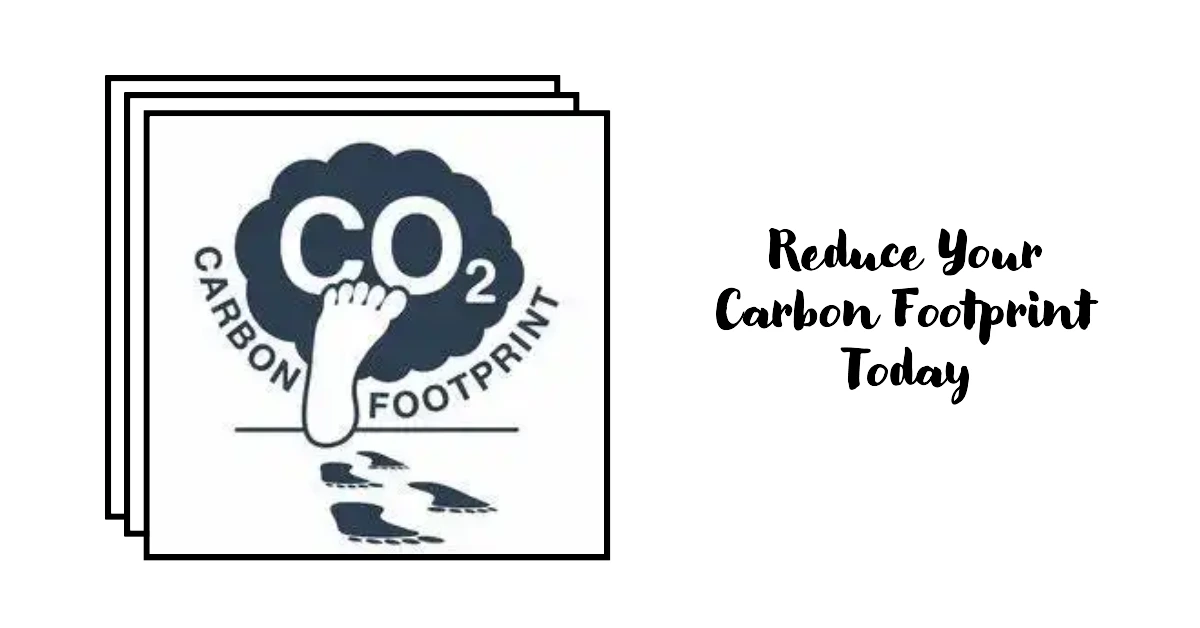Hey there, eco-enthusiasts! Ready to dive into a topic that affects us all, whether we realize it or not? Let’s talk cảbon management, and trust me, it’s more intriguing than you might think!
Why Carbon Management Matters
You know that feeling when you’re stuck in traffic, and it’s blazing hot outside? Well, those traffic jams and scorching summers are closely linked to cảbon management.
See, our love for burning fossil fuels, cutting down forests, and making space for agriculture has led to a rather unwanted guest at our planetary party: cảbon dioxide (CO2). It’s like an uninvited guest that just won’t leave, causing global warming and climate change.
But here’s the good news: Carbon management is like the bouncer at this party. It’s crucial for kicking out excess CO2 and showing climate change the door.
A Quick Tour of Carbon-Related Stuff
Now, let’s take a spin through the different attractions of this cảbon carnival:
- Carbon Emissions: Think of CO2 as the troublemaker in the atmosphere. We’re talking about the gas responsible for climate change. Spoiler alert: It’s on the rise thanks to us.
- Carbon Capture and Storage: Ever heard of a vacuum cleaner for CO2? Well, technologies for capturing and storing it exist, and they’re like our environmental cleanup crew.
- Carbon Footprint: This is like your Earthly cảbon shadow. Measuring and shrinking it is our way of minimizing our impact on the climate.
- Renewable Fuels and Alternatives: Wind, solar, and other renewables are the superheroes of this story, battling cảbon emissions one gust of wind or ray of sunshine at a time.
- Sustainable Corporations: Some companies are carbon champions! They’re showing us how to run a business without trashing the planet.
- Carbon Sinks: Mother Nature’s helping hand. Reforestation and soil improvement naturally suck up CO2, like Earth’s own detox plan.
So, fasten your seatbelts, fellow planet-protectors, because we’re about to embark on a carbon-cutting adventure. We’ll explore how we got here, where we’re going, and how each of us can play a part in ensuring a low-carbon future.
Ready? Let’s roll!
Carbon Emissions: Where’s All That cảbon Coming From?

Alright, buckle up, folks! We’re about to uncover the sources of carbon emissions and how they’re cranking up the heat on our planet.
Unmasking the cảbon Culprits
First up, let’s unveil the villains of the story – the sources of cảbon emissions:
- Fossil Fuels: Think coal, oil, and natural gas. These bad boys are notorious for pumping carbon into the atmosphere when we burn them for energy. They’re like the pyromaniacs of the carbon world.
- Deforestation: When we clear forests for things like agriculture, we’re essentially releasing all the stored carbon in those trees back into the air. It’s like a carbon jailbreak!
- Industrial Shenanigans: Factories and manufacturing processes can be quite the carbon chatterboxes. They produce carbon dioxide as a byproduct, adding to the greenhouse gas symphony.
Carbon’s Sneaky Effects
Now, let’s talk about what happens when carbon emissions run wild:
- The Greenhouse Gas Effect: Imagine CO2 as a cozy blanket wrapped around the Earth. It’s all warm and fuzzy until it starts trapping too much heat. This is the greenhouse gas effect, and it’s heating up our planet, leading to global warming and climate change.
- Weather Gone Wild: Thanks to carbon overload, we’re seeing more tantrums from Mother Nature. Think crazy storms, floods, droughts – it’s like Earth’s way of saying, “I’ve had enough!”
- Rising Tides: Ever heard the saying, “I’m all washed up”? Well, due to melting polar ice caps and glaciers, coastal communities might soon be singing that tune. Rising sea levels are no joke.
Fighting Back: The Global cảbon Avengers
But fret not, fellow planet-savers! There are heroes in this story:
- International Agreements: Around the globe, countries are joining hands like the Avengers to tackle carbon emissions. The Paris Agreement is like our superhero headquarters, where nations pledge to cut down on carbon.
- Carbon Pricing: It’s like giving businesses a monetary incentive to go green. Carbon taxes and cap-and-trade systems are our trusty sidekicks, encouraging companies to emit less carbon.
- Clean Tech Innovations: Governments and private companies are investing in renewable energy sources and cool tech that captures carbon. It’s like upgrading our carbon-fighting arsenal.
So there you have it, folks – the carbon emissions saga in plain, chatty language. Now that we know where the carbon’s coming from and the mess it’s causing, let’s explore ways to tidy things up in the next chapter.
Carbon Capture and Storage: Catching cảbon by Surprise

Now that we’ve identified the carbon culprits, it’s time to play detective and figure out how to catch them. Let’s explore the cool methods and tricky challenges of carbon capture and storage.
A. Carbon Capture Magic Tricks
- Post-Combustion Capture: Imagine this as a magician pulling a rabbit out of a hat, but in this case, it’s carbon dioxide being pulled out of the smokestack after fossil fuels are burned. Chemical solvents work like the magician’s wand, separating CO2 from the rest of the emissions.
- Pre-Combustion Capture: Here, we’re doing some sneak attacks before the fossil fuels even get burned. It’s like disarming the villain’s weapon before they can use it, reducing the carbon released during combustion.
- Oxy-Fuel Combustion: Think of this as a high-oxygen superhero environment for burning fossil fuels. It produces a concentrated stream of carbon dioxide that’s easier to capture. It’s like focusing all the villains into one spot for capture!
B. Storing cảbon: Finding the Perfect Hideout
- Geological Storage: Picture this: we’re burying carbon dioxide deep underground in geological hideouts, like old oil and gas reservoirs or salty aquifers. It’s like stashing away a treasure chest where no one can find it.
- Mineral Storage: In this method, carbon dioxide has a secret identity – it turns into stable carbonate compounds by reacting with minerals. These compounds can be locked away indefinitely, like carbon in witness protection.
- Ocean Storage: Now, we’re diving into the deep blue. By injecting carbon dioxide into the ocean depths, we can keep it locked up for a long time. But, beware – this move raises concerns about possible environmental side effects.
C. Facing the Challenges Head-On
But, just like any superhero, carbon capture and storage have their kryptonite:
- Cost and Energy: These technologies can be like high-maintenance pets. They’re expensive and need lots of energy, which can make them less appealing for widespread use.
- Public Doubts and Rules: People can be skeptical about the safety and long-term effectiveness of carbon storage. These doubts, combined with regulatory hurdles, can slow down the adoption of these techniques.
- Innovation is the Hero: The good news is, innovation and investment are our capes! Continued research and financial support in carbon capture and storage can help overcome these challenges and save the day in the fight against carbon emissions.
So, there you have it – the world of carbon capture and storage, complete with magical tricks and some formidable foes. Stay tuned as we explore more climate-saving adventures in our journey to a greener future.
Carbon Footprint: Walking the Green Talk

Alright, eco-warriors, it’s time to talk about something personal – our carbon footprints. Don’t worry; we’re not here to judge; we’re here to learn how to shrink those footprints!
A. The What and How of Carbon Footprints
So, what’s this “carbon footprint” thing, anyway? It’s like your environmental shadow, trailing behind you and leaving its mark on the planet. Here’s how we measure it:
- Carbon Footprint: This is the total amount of greenhouse gases, mainly carbon dioxide, produced by individuals, organizations, or even products. It’s like a scorecard for our impact on the environment.
- Measurement Tools: We’ve got some fancy tools and methods to calculate these footprints. They consider stuff like how much energy we use, how we get around, and even how much trash we produce. It’s like a detective figuring out the size of our eco-footprints.
B. Slaying the cảbon Footprint Dragon
Now, let’s talk about our battle plan to shrink those carbon footprints:
- Energy Efficiency: This is like turning off the lights when you leave a room. We can use energy-efficient technologies and practices, like LED lights and those super-frugal appliances, to cut down on carbon emissions.
- Embracing Renewables: Imagine getting your energy from the sun and the wind instead of burning stuff. Transitioning to renewable sources, like solar and wind power, is like switching to clean, green energy superheroes.
- Changing How We Get Around: You know that solo car ride to work? Try carpooling or taking public transportation instead. Or better yet, hop on an electric vehicle! It’s like trading in your gas-guzzler for a carbon-cutting superhero ride.
- Waste Less, Save More: Trash isn’t just smelly; it can be carbon-heavy too. By recycling and composting, we can help minimize carbon emissions from waste management. It’s like giving trash a second chance at life.
- Carbon Offsets: Sometimes, we can’t avoid all carbon emissions. That’s when carbon offsets come to the rescue. It’s like making up for the carbon “sins” by supporting projects that reduce emissions elsewhere.
C. Success Stories: The cảbon Avengers
Now, let’s take some inspiration from those who’ve already gone green:
- Company A: This corporate hero invested in energy-efficient tech and renewable energy sources. The result? They not only slashed their carbon emissions but also achieved carbon neutrality. Talk about a green makeover!
- Individual B: Meet our everyday hero! By going plant-based, using public transport, and making their home energy-efficient, Individual B managed to shrink their personal carbon footprint. It’s like a superhero in their own home!
So, there you have it, folks – the lowdown on carbon footprints and how we can all be superheroes in the fight against climate change. Stay tuned for more tips and tricks as we continue our eco-adventure!
Renewable Fuels and Alternatives: The Green Energy Revolution
Now, let’s dive into the world of renewable energy – the superheroes of the carbon-cutting squad. These folks are here to save the day, and we’re about to meet them up close!
A. Renewable Energy: Our Climate Heroes
First things first, let’s understand why these renewable energy sources are the true climate change warriors:
- Climate Change Mitigation: Think of them as the eco-warriors of energy. Solar panels, wind turbines, and hydro power stations produce energy without spewing carbon emissions into the atmosphere. They’re like the caped crusaders against global warming.
- Energy Security: By diversifying our energy sources and tapping into renewables, we’re reducing our reliance on fossil fuels. It’s like having multiple backup plans to keep the lights on.
B. Meet the Superstars of Renewables
- Solar Power: Picture this – sunlight turns into electricity, thanks to solar panels. It’s like having a tiny sun on your rooftop, providing clean and abundant energy.
- Wind Power: Wind turbines are like modern-day windmills, capturing the power of the breeze to generate electricity. It’s a sustainable, low-emission energy source that harnesses the power of the air.
- Hydro Power: Imagine waterfalls and flowing rivers turning turbines – that’s hydroelectric power! It’s like tapping into nature’s own energy source, contributing to a low-carbon energy mix.
- Bioenergy: Biomass and biofuels are the cool kids of renewables. They’re derived from organic stuff like plants and waste and can replace fossil fuels. It’s like turning yesterday’s leftovers into tomorrow’s power.
C. The Future Is Green and High-Tech
But wait, there’s more! Renewable energy is getting even cooler:
- Energy Storage: Think of it as a super battery. Innovations in energy storage, like advanced batteries and pumped hydro storage, help us store and use renewable energy more effectively. It’s like having a giant eco-friendly energy piggy bank.
- Smart Grids: These grids are like the traffic controllers of energy. Smart grids and demand response technologies are making sure we use renewables efficiently and wisely. It’s like having a GPS for our power.
- Next-Gen Tech: The science geeks are at it again, researching and investing in emerging clean energy technologies. From hydrogen fuel cells to advanced nuclear power, they’re like the pioneers of the energy frontier, further reducing carbon emissions.
So, there you have it, our renewable energy all-stars and the high-tech gadgets making our energy greener and cleaner. Stay tuned as we journey deeper into the world of sustainability and carbon-fighting innovations!
Sustainable Corporations: Saving the Planet, One Business at a Time
In this section, we’re diving into the world of companies that wear their green hearts on their sleeves. These corporate heroes are not just about profits; they’re all about making a positive impact on the planet.
A. Why Corporate Responsibility Matters
Let’s kick things off by understanding why corporate responsibility in carbon management is a big deal:
- Environmental Impact: Imagine the planet as our home. Companies are like the roommates, and the way they run their operations can either help or harm our home. It’s crucial for them to adopt eco-friendly practices and cut carbon emissions.
- Reputation and Consumer Power: Here’s the scoop: consumers are flexing their eco-muscles. They want products and services that come with a side of sustainability. Companies that show they care about the environment can win over these eco-savvy consumers. It’s like a vote for the planet with every purchase.
B. Corporate Best Practices: Going Green and Staying Profitable
So, how do these companies walk the talk? Here are some best practices:
- Energy Efficiency: Think of this as turning off the lights when you leave a room, but on a larger scale. Companies use energy-efficient technologies and practices to cut carbon emissions and save on operating costs. It’s like a win-win for the planet and their wallets.
- Embracing Renewables: Just like individuals, companies are switching to renewable energy sources like solar and wind power. This not only reduces their cảbon footprint but also showcases their commitment to sustainability. It’s like a corporate superhero cape.
- Supply Chain Sustainability: Companies don’t just go green; they bring their suppliers along for the ride. They ensure that the products and services they offer are produced in an environmentally responsible manner. It’s like extending the green family tree.
- Waste Reduction: Trash talk? Not here! Companies implement waste reduction strategies like recycling and composting to minimize carbon emissions from waste management. It’s like turning trash into treasure.
- Employee Engagement: Companies encourage their employees to be eco-warriors too. Whether it’s using public transportation or reducing energy consumption, every small action counts. It’s like building a carbon-cutting army from within.
C. The cảbon Avengers of the Corporate World
Now, let’s meet some of the real-life corporate heroes:
- Company X: These folks invested in renewable energy, adopted energy-efficient technologies, and even got their employees on board with sustainability. The result? A significant drop in carbon emissions and a shining example of corporate responsibility.
- Company Y: Carbon neutrality? They’ve got it covered. Company Y offset their emissions by investing in carbon capture projects and made sustainability part of their DNA. It’s like having a green halo over their business.
These are just a couple of stories from the corporate frontlines. Stay tuned as we explore more tales of sustainability and eco-friendly innovation!
Conclusion
And so, we reach the end of our journey through the world of cảbon management. But this is just the beginning of a grand adventure towards a greener and brighter future.
The future of carbon management is filled with hope, innovation, and collective action. By working together, we can create a low-carbon world where the air is cleaner, the planet is healthier, and future generations can thrive.
Let’s embark on this journey, hand in hand, towards a sustainable and carbon-friendly future.

